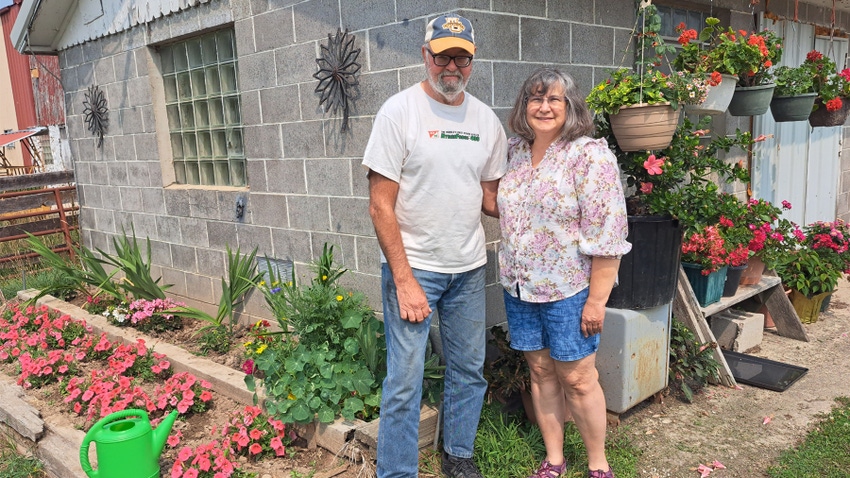
When David and Anne Rinzel were raising three daughters on their 276-acre farm near Lomira in Dodge County, Wis., they had a large garden where they grew about an acre of fruits, vegetables and flowers. Until 2007, they also milked between 65 and 95 cows.
"It was a lot of work, but healthy for myself and my family. In addition, it saved us money,” Anne says. “My children were in the foods and nutrition project in 4-H. They always impressed the judge when telling them the ingredients that were grown on our farm."
Their daughters — Neela, Tia and Faith — helped with farm chores and gardening while they were growing up.
“We grew tomatoes, onions, asparagus, peppers, green beans, squash, pickles, lettuce, carrots, beets, broccoli, spinach, cauliflower, cabbage, raspberries, radishes, zucchini, peas, rhubarb, strawberries, apples, cilantro and sweet corn,” Anne says. “We froze and canned fruits and vegetables and put up a lot of applesauce. It was a lot of work.”
Picking pickles
One year, the Rinzels decided to grow a quarter-acre of pickles.
“Our daughters got tired of picking pickles, and we got tired of it, too,” Anne says. “It took a lot of time to process 60 gallons of pickles and send even more pickles to the farmers market."
Today, the Rinzels still farm 276 acres and raise a garden, but they have cut back.
“David is 71 years old, and I am 63,” Anne explains.
The cows were sold in 2007. The couple grows soybeans, corn, wheat and sweet corn. Their garden is smaller too, Anne says.
“We grew fewer vegetables last year because David had open heart surgery a year ago,” Anne says. “We still have two apple trees, two pear trees, black raspberries, red raspberries, and we grow green beans, onions, radishes, spinach, lettuce, tomatoes, beets, broccoli, garlic, asparagus, cabbage, Roma tomatoes, peppers, sweet corn and lots of flowers. We had 182 big onions last year, but we cut back on onions this year.
“It still takes us 45 minutes to water everything — and with the drought, we are watering every day. Compared to people in town, we still have a pretty big garden, but it is a lot smaller than it was. With our daughters grown and on their own now, this is all we need.”

POLE BEANS: David Rinzel came up with an easier way to grow green beans by switching from bush-type beans to pole beans. He bought a wire fence panel and bent it into a U-shape. He planted beans along the bottom of the panel on each side. The beans grow up the panel, making it easier to pick them.
Family tradition
Anne says gardening is a family tradition. “After David and I got married in 1986, my father-in-law made gardening a full-time thing,” she recalls. “He actually had four gardens. He grew a lot of vegetables for the family, but he also donated a lot of fresh vegetables to his church.”
The first several years Anne and David were married, they grew a half-acre of sweet corn and had a sweet corn stand in front of their house.
Two vegetables David and Anne still grow a lot of are asparagus and green beans.
“David’s favorite vegetable is asparagus, and we’ve always had an asparagus patch,” Anne says. “My favorite vegetables are green beans. We freeze green beans and eat them over the winter.”
In 2017, David came up with a plan to make growing green beans easier.
“We used to plant bush-type green beans that we grew in a row, but six years ago we switched to growing pole beans instead of bush beans,” he explains. “We only have to bend over to pick the green beans at the bottom.”
David bought a wire fence panel and bent it into a U-shape.
“We plant the beans along the bottom of the fence panel on each side, and they grow up the panel,” he says. “It’s a lot easier to pick green beans now.”
About the Author(s)
You May Also Like






